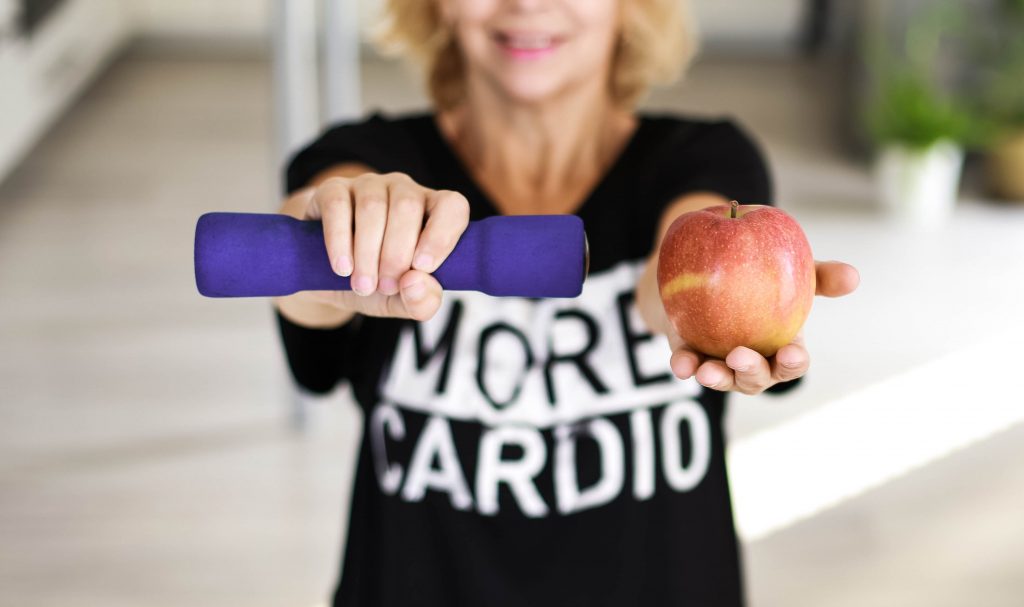Are you trying to get into shape but don’t know how much cardio you should be doing? If so, this article is for you! From the benefits of cardio to the different types of workouts, it can be hard to figure out what’s best for your fitness goals. The truth about cardio is that it is a key part of achieving a healthy lifestyle.
In this article, we’ll dive deep into the world of cardio and explore how much really do you need in order to maximize your results. From heart health to weight loss and improved quality of life, discover the beneficial effects that this form of exercise has on your body and mind. Get ready to learn everything there is to know about the truth about cardio – it’s time to make those changes today!
Truth about Cardio
Cardio is an important part of any fitness routine, but how much do you really need? The truth is that everyone’s ideal cardio workout will vary depending on their goals, body composition and level of fitness. To maximize your results, aim for at least 150 minutes of moderate-intensity aerobic exercise per week or 75 minutes of vigorous intensity activity. This can be broken up into shorter duration workouts spread throughout the week.
High-intensity interval training (HIIT) and steady-state cardio are both great options to choose from when looking to up your cardio game. Remember to mix it up with strength training as well – this will help build muscle and improve your body composition.
Finally, make sure to watch your calorie intake and maintain a calorie deficit in order to see the best results from your workouts. With the right combination of cardio exercises and dietary discipline, you can achieve the health benefits that come with regular physical activity!
Cardio is an essential component of any fitness routine and with the right combination of exercises and diet, you can reach your goals! Now let’s take a look at why cardio is important for overall health.
Why Is Cardio Important?
Cardio is an important part of any fitness routine and there are many benefits that come with regular cardio exercise. It can help to boost your mood, improve your heart health, and reduce the risk of many chronic diseases. Cardio also helps to increase the amount of oxygen in your body which can improve physical performance and enhance your overall quality of life. Additionally, when done regularly, cardio can help you to lose weight and maintain a healthy body composition.
Finally, cardio can help strengthen bones and muscles which support better posture as well as better balance. All in all, regular cardio activity can have a positive effect on your body that extends far beyond just being able to fit into those jeans!
Overall, regular cardio exercise can be an invaluable part of any fitness routine. It is important to remember that consistency is key and the benefits of cardio should not be underestimated! Get ready to learn even more about why you should make cardio a part of your life – next we will look at all the amazing benefits it can bring!

Benefits of Cardio
Cardio is a great way to get fit, tone up, and stay healthy. There are many benefits that come with regular cardio exercise, including improved heart health, increased aerobic fitness, and reduced risk of chronic diseases. Cardio can also help you lose weight by burning calories and creating a calorie deficit, while also helping to strengthen bones and muscles. Plus, regular cardio can boost your mood and energy levels!
The type of cardio you do will depend on your goals; if weight loss is your main goal you may want to focus on steady-state cardio or high-intensity interval training (HIIT). Alternatively, strength training or weight training are great for building muscle and improving balance. The amount of time you should spend doing cardio will depend on your current level of fitness but as a general rule of thumb it’s recommended to aim for at least 150 minutes per week spread across 3-4 days each week.
So if you’re looking to improve your overall health, look no further than cardio exercise! Find the right routine for you and start reaping the many benefits that come with regular cardio today. And don’t forget – next up we’ll delve deeper into the topic of heart health and how it’s impacted by regular cardio exercise.
Heart Health
Having a healthy heart is essential for living a long and happy life. Cardio exercise does wonders for your cardiovascular health! With regular cardio workouts, you can improve blood circulation, reduce blood pressure and cholesterol levels, strengthen your heart muscle, and increase your overall fitness level. Additionally, regular cardio can help you lose weight by burning calories and creating a calorie deficit.
So how much cardio do you need to stay healthy? The amount of time varies depending on your age, current fitness level, and goals – but 150 minutes per week spread across 3-4 days each week is a great place to start. You can also mix up your routine with different types of cardio such as steady-state or HIIT (high-intensity interval training).
And remember – don’t forget that there are many other ways to contribute to heart health such as eating a balanced diet full of fruits and vegetables, avoiding smoking and excessive alcohol consumption, reducing stress levels through hobbies or meditation, and getting enough sleep every night.
Improved Metabolic Rate
It’s no secret that regular cardio can do wonders for your metabolic rate. But what exactly does this mean? Well, a higher metabolic rate means that your body is better at burning calories and fat. This is great news if you’re looking to lose weight or maintain a healthy weight. Increased metabolism also helps improve energy levels throughout the day, so you can stay active and alert.
In addition to regular cardio, there are other ways to boost your metabolism such as eating more fiber-rich foods and drinking plenty of water. Additionally, strength training can help increase muscle mass which in turn further boosts your metabolic rate because it takes more energy to maintain muscle than it does fat. Finally, reducing stress levels can help keep your metabolism running efficiently by lowering cortisol (the stress hormone).
By combining cardio with strength training, healthy nutrition habits and stress management techniques, you’ll be able to maximize the benefits of improved metabolic rate – leading to a healthier lifestyle overall!
Weight Loss
Weight loss can be a daunting task, but the good news is that cardio exercise can help! Cardio helps by increasing your heart rate, which in turn increases your calorie burn. Incorporating regular cardiovascular activity into your routine will not only help you burn more calories, but also improve your overall health.
A great place to start is 30 minutes of moderate intensity cardio 3-4 days per week. Examples of moderate intensity exercise include jogging or walking at a brisk pace, swimming or cycling on flat terrain. If you’re looking for an extra challenge, high-intensity interval training (HIIT) is a great way to get more out of your workout in less time. HIIT involves alternating bursts of intense exercise with periods of rest or low intensity exercise.
No matter what type of cardio you choose, the important thing is to make sure it’s something that you enjoy and will stick with over time. This is key for achieving maximum weight loss results! In addition to regular exercise, remember to focus on healthy eating habits and adequate sleep as part of any weight loss program for optimal success.
Body Composition Changes
When it comes to body composition changes, cardio exercise can be a great way to help you reach your goals. Studies have shown that regular aerobic exercise helps increase lean muscle mass while reducing body fat. This is especially true if you combine cardio with strength training and a healthy diet.
To maximize the benefits of your exercise program, aim for at least 30 minutes of moderate intensity cardio 3-4 days per week. When combined with strength training and a calorie deficit, this type of physical activity will help you reach your desired body composition in no time.
Don’t forget that physical activity should be something that you enjoy! Find ways to make your workouts fun – whether it’s going for an outdoor run or taking a dance class – so that you stick with it long-term. With the right attitude and commitment, you can achieve amazing results!
Improved Quality of Life
When it comes to improving the quality of your life, cardio exercise can be a great way to help you reach your goals. Not only does regular aerobic exercise help increase lean muscle mass while reducing body fat, but it also gives you more energy and helps reduce stress – both of which are major contributors to overall quality of life.
Regular cardio exercise has been linked to improved moods and better sleep, as well as enhanced cognitive ability and mental clarity. Plus, when done correctly and consistently, cardio workouts can improve cardiovascular health, help maintain healthy weight levels, and even extend life expectancy.
If you’re looking to get started on your journey towards improved quality of life through cardio training, aim for at least 30 minutes of moderate intensity cardio 3-4 days per week. When combined with strength training and a healthy diet plan that works best for you, this type of physical activity will help you achieve amazing results in no time – from increased energy levels to improved moods and better sleep quality!
Different Types of Cardio Workouts
When it comes to cardio workouts, there are a variety of different types and intensities to choose from. Depending on your goals, you can tailor these exercises to help you reach your desired outcome. Whether you’re looking to lose weight, build muscle or just improve overall fitness levels, these exercises will get the job done!
Weight training can be incorporated into your cardio routine as well. Weight training helps build lean muscle mass while increasing strength and power – all important elements for improving overall fitness levels. So if you’re looking for a comprehensive approach that combines aerobic exercise with strength training, this could be the perfect solution for you!
No matter what your fitness goals are, there’s a type of cardio exercise that can help you reach them. With HIIT, Steady-State Cardio and Weight Training, you have the perfect combination to help improve your overall fitness levels. Get ready to take your cardio routine to the next level – let’s learn more about the amazing benefits of Steady-State Cardio!
Steady-State Cardio
Steady-state cardio is a great way to improve your overall fitness levels and can be tailored to fit any goal. Whether you’re looking to burn calories, build muscle or just get in shape, steady-state cardio is an effective and efficient exercise option. This type of workout involves maintaining a consistent heart rate over an extended period of time, usually 30 minutes or more, by walking, running or cycling at a steady pace. Steady-state cardio helps increase endurance levels while also burning calories efficiently.
Furthermore, this type of exercise increases aerobic capacity and strengthens the heart – two very important aspects for living a healthy lifestyle. So if you’re looking for an easy way to get in shape and boost your overall fitness levels, consider giving steady-state cardio a try!
High Intensity Interval Training (HIIT)
High Intensity Interval Training (HIIT) is a great way to get in shape quickly and efficiently. HIIT workouts involve alternating between periods of high intensity exercise and low-intensity recovery. This type of workout increases aerobic capacity, burns calories faster and helps improve overall fitness levels. Additionally, HIIT has been shown to increase metabolism and reduce fat storage, which can help you reach your weight loss goals faster. Plus, it’s time-efficient since you don’t have to spend hours in the gym – HIIT can be done in 20 minutes or less! So if you’re looking for a quick way to get fit and stay healthy, consider giving HIIT a try!
How Much Cardio Do You Really Need?
Cardio workouts are an important part of a healthy lifestyle, providing many health benefits such as improved cardiovascular health and increased calorie burning. But how much cardio do you really need? The answer depends on several factors, including your body composition, fitness level and weight loss goals.
Generally, the more intense the cardio exercise, the fewer hours per week you need to spend exercising. For instance, high intensity interval training (HIIT) can provide great results in just 20 minutes once or twice a week. On the other hand, if you’re looking for more general health benefits and not necessarily focused on fat loss, then 30 to 60 minutes of moderate intensity exercise three to five days a week is recommended.
The type of cardio matters too—steady-state activities like running or cycling are good for aerobic fitness while weight training or resistance exercises help increase muscle strength and tone. It’s also important to consider other physical activities that may be part of your daily routine such as walking or playing sports with friends.
Overall, experts recommend doing at least 150 minutes of moderate-intensity cardio or 75 minutes of vigorous-intensity cardio each week plus strength training two days per week for optimal health benefits. However, your exact needs will vary based on your goals and level of fitness so it’s best to speak with your doctor or personal trainer to determine how much cardio is right for you.
No matter your individual goals, cardio is an essential part of a healthy lifestyle. Make sure you’re getting the right amount for you – stay tuned to learn more about how many hours per week and minutes per day of cardio you should be doing!
Hours Per Week & Minutes per Day
When it comes to cardio, the amount of time you spend exercising each week can vary depending on your goals and fitness level. Generally speaking, experts recommend getting at least 150 minutes of moderate-intensity exercise or 75 minutes of vigorous-intensity exercise over the course of a week. This could mean 30 minutes five days a week or 15 minutes six days a week—it all depends on how much time you have available in your schedule.
If you’re looking for more specific guidelines, aim for 20 to 30 minutes of moderate intensity cardio five days a week (or two to three short 10-minute sessions) plus two strength training sessions per week. This will give you enough time to reap the benefits while still allowing for other activities and commitments in your life. If you’re trying to lose weight or increase your aerobic fitness, you may need closer to 60 minutes per day, five days a week.
No matter what type of cardio program works best for you, remember that consistency is key! Even if it’s only 15 minutes per day or 45 minutes per week, making sure that you’re getting some form of cardio every single day will help improve your overall health and quality of life in the long run.
Days per Week & Type of Exercise
When it comes to cardio, the days per week and type of exercise you choose can be just as important as the amount of time spent. Depending on your goals and level of fitness, your weekly workout plan may include a combination of different types of exercise. For example, if you’re looking for an overall boost in aerobic fitness or weight loss, you may want to combine steady-state cardio with high-intensity interval training (HIIT) or weight training. Steady-state cardio is great for burning calories and increasing endurance, while HIIT is more effective for fat loss and improving VO2 max. Weight training is ideal for building muscle strength and improving body composition.
When creating a cardio program that works best for you, try to mix it up with different types of exercise throughout the week. This will help keep your body challenged while preventing boredom from setting in. Aim for three to five days a week of both low-intensity steady state cardio and intense HIIT workouts or weight training sessions—whichever suits your needs best! And don’t forget to rest; even professional athletes take at least one day off per week to let their muscles recover properly. With consistency and dedication, you can create a balanced program that helps improve both your physical health and mental wellbeing.

Conclusion
In conclusion, the amount of cardio you need really depends on your personal goals and fitness level. If you’re just looking to maintain your current fitness level, then 30 minutes of moderate-intensity cardio a few times a week should suffice. However, if you’re trying to improve your cardiovascular health or lose weight, you may need to increase the amount of cardio you do.
It’s important to also remember that cardio is just one aspect of a well-rounded fitness routine. Strength training and flexibility exercises are also important for overall health and fitness. So, don’t neglect those areas either.
Ultimately, the key is to find a balance that works for you and your lifestyle. Listen to your body and adjust your workouts as needed. With dedication and consistency, you can achieve your fitness goals and improve your overall health.

